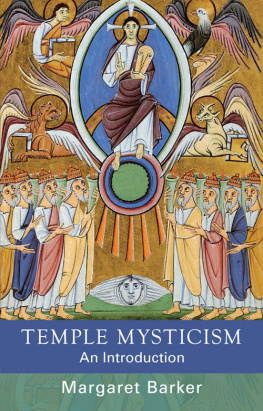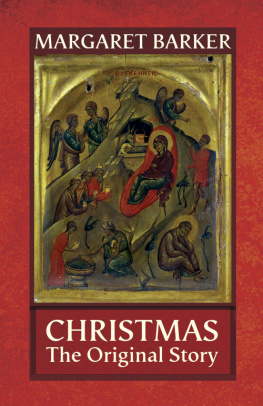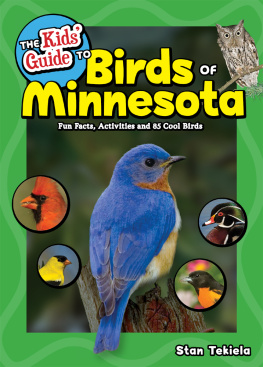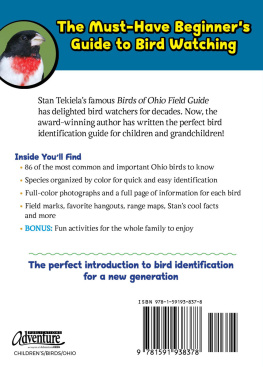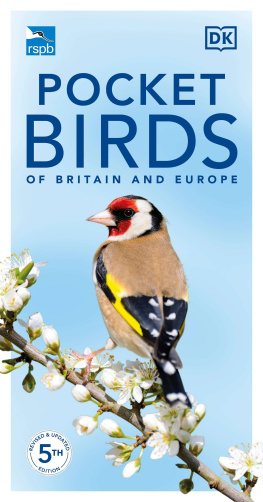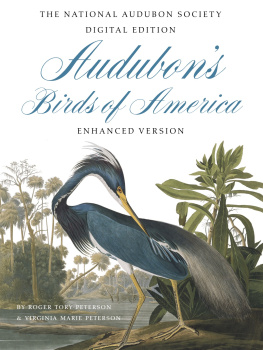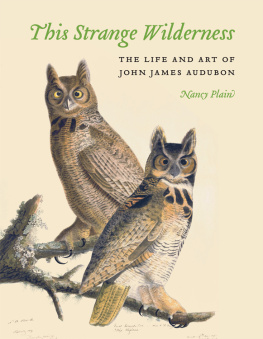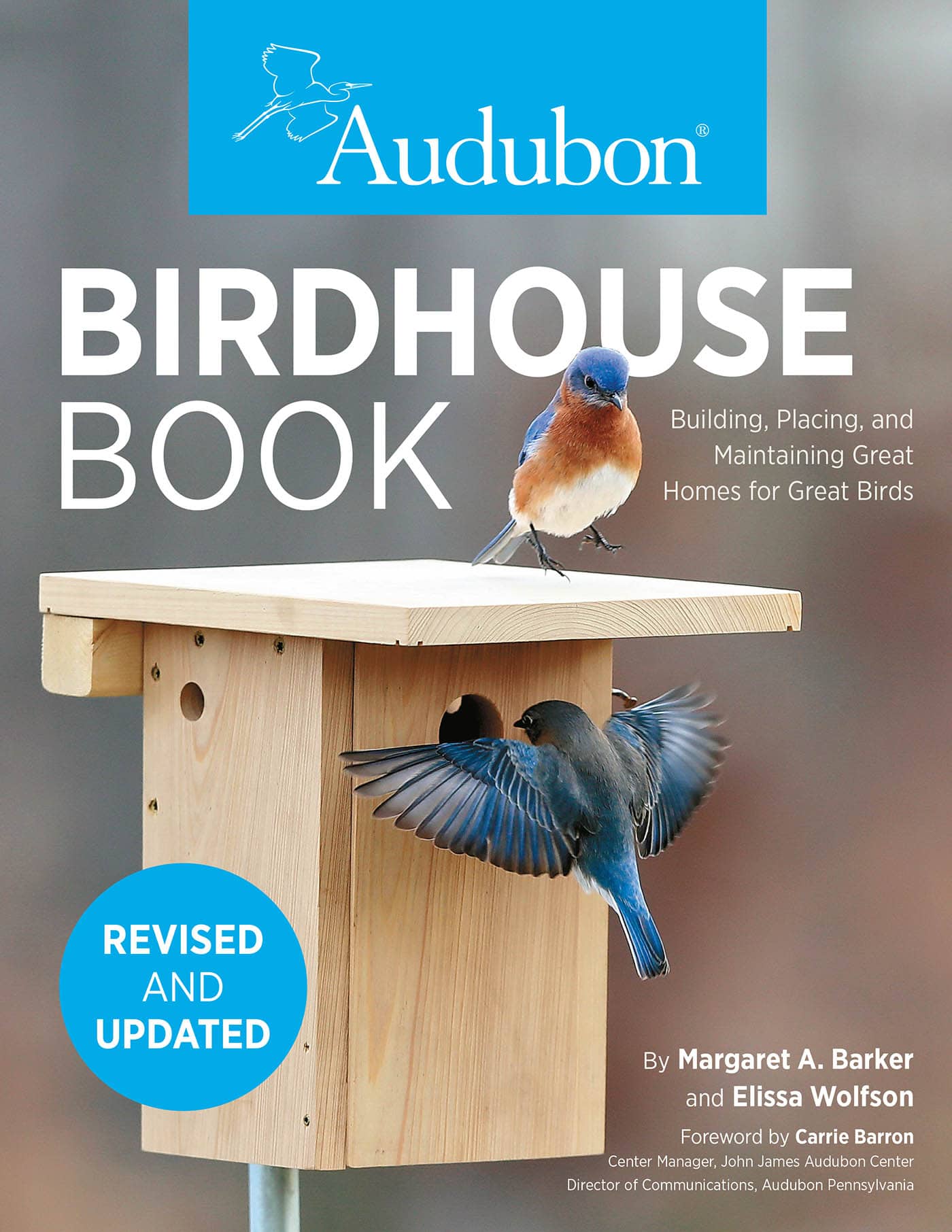Contents
Page List
Guide
Cover

BIRDHOUSE
BOOK
Building, Placing, and
Maintaining Great Homes for
Great Birds

By Margaret A. Barker
and Elissa Ruth Wolfson
Foreword by Carrie Barron
Center Manager, John James Audubon Center Director of Communications, Audubon Pennsylvania
Introduction by Stephen W. Kress
founder, National Audubon Societys Project Puffin
Carpentry by Chris Willett

CONTENTS
INTRODUCTION
Woodpeckers: The Original Birdhouse Builders
LIST OF BUILDING PLANS

FOREWORD
W hen the National Audubon Society released a report called Survival by Degrees: 389 Bird Species on the Brink, most of us already knew that climate change was a major threat to birds. However, this report brought to light the range shifts that birds will face as the earth continues to warm, further threatening their survival. True, birds face additional challenges, including habitat destruction, window collisions, and domestic cats. Yet there is now no debate: Climate change is the number one threat to birds (see ).
Thankfully, there are ways that we can help.
One of the best ways to help our birds thrive in their natural habitat is by making your outside space more bird friendly. Simple changes dont only provide a safe place for birds, they also create enjoyment for you and your family.
HELPING BIRDS RIGHT IN YOUR OWN BACKYARD
One of the easiest and most rewarding ways to help birds thrive is to install birdhouses. Perhaps thats why you are holding this book! Many birds make their own open nests in trees and shrubs, on the ground, or on human-made structures. Cavity nesters, on the other hand, are birds that generally need tree holesnatural or created. Many of their typical nesting cavities, such as hollow old trees, have been removed as deforestation and development replace mature forests. There are fewer and fewer places for these birds to nest. That is where you come in: You can help by building birdhouses!
Like birds, birdhouses come in all shapes and sizes, from the Xbox Bluebird Nest Box (). Each birdhouse and nesting structure described in this book provides a safe place for birds to raise their young, find protection from predators, and keep sheltered from the weather.
Building a birdhouse is a great way to start making your outdoor space friendlier for birds. But also consider other methods. One of my favorite ways to help birds is by enhancing outdoor surroundings with native plants (see Gardening for Birds on ). Native plants are found naturally in the area in which they evolved. They are the foundation for all wildlife to successfully sustain themselves within a balanced ecosystem. Birds rely on these plants for food, including the insects that co-evolved with them. Native plants also enhance the beauty of your surroundings and generally require less maintenance, including watering. In contrast, traditional lawns often require fertilizer and chemicals, which harm the environment. Native plants are a perfect way to help both birds and communities at the same time. Its a win-win!
Another way that you can help birds is by preventing window strikes and collisions. Statistically, millions of birds die each year from window collisions and almost half of them are hitting home windows. Birds often arent able to see themselves in windows, but they see the reflection of the sky and trees and assume they have a clear and safe path in which to fly. Thus, make sure your birdhouses, as well as bird feeders or bird baths, are far away enough from windows that birds dont injure themselves on the way in or out of your yard. For an inexpensive fix, hang strings or ribbons on your windows to help break up the mirror image. You can also add decals or tape. The American Bird Conservancy provides specific guidelines. Lead poisoning from bullets and fishing gear is another danger to birds. Plastic trash, too, is increasingly harmful to bird populations. These topics, along with specific bird-saving techniques, are covered in ).
BIRDHOUSES AND COMMUNITY SCIENCE
Among the wonderful benefits of having birds in your outdoor spaces, birdhouses can also be places for observation, fact gathering, and learning (see ).
Male Eastern Bluebird perched in a holly bush. Steve Byland
Science programs around the world rely on community members to gain a stronger understanding of how people and birds can successfully live together. This data also helps us better track and understand bird populations and see if our climate models are following the predicted patterns. Being part of a community science program, such as those hosted by Audubon centers or chapters, empowers people to have a large impact without having to make a huge commitment. Everyone can participate! Signing up for programs like NestWatch allows birders of every level to monitor bird boxes.
People of all ages are becoming hooked on the hobby of watching and observing birds. Because you can bird from home while having coffee, while on a walking break from the office, or when taking your kids or grandkids to a playground, its an accessible activity. Adding birdhouses to your outdoor space makes it even more accessible and brings birds up close and personal.
In addition to a safer backyard for the birds, you and your family will get the pleasure of watching these fascinating creatures! In spring, bird parents carry nesting material in their beaks to create a cozy space for their eggs. When the young birds hatch, youll get to see their little heads peeking out, looking at the big world for the first time. As they leave their birdhouse, youll witness the miracle of fledglings taking flight. Soon bird songs will fill the air and your heart.
SO LETS GET GOING!
Build and hang a birdhouse, plant native plants, and get excited knowing you have created a beautiful environment that is strengthening the relationship between you, your family, and birds. No matter what project youre planning first, this book will inspire you to start now. Happy birding!
Carrie Barron
Center Manager,
John James Audubon Center
Director of Communications,
Audubon Pennsylvania


